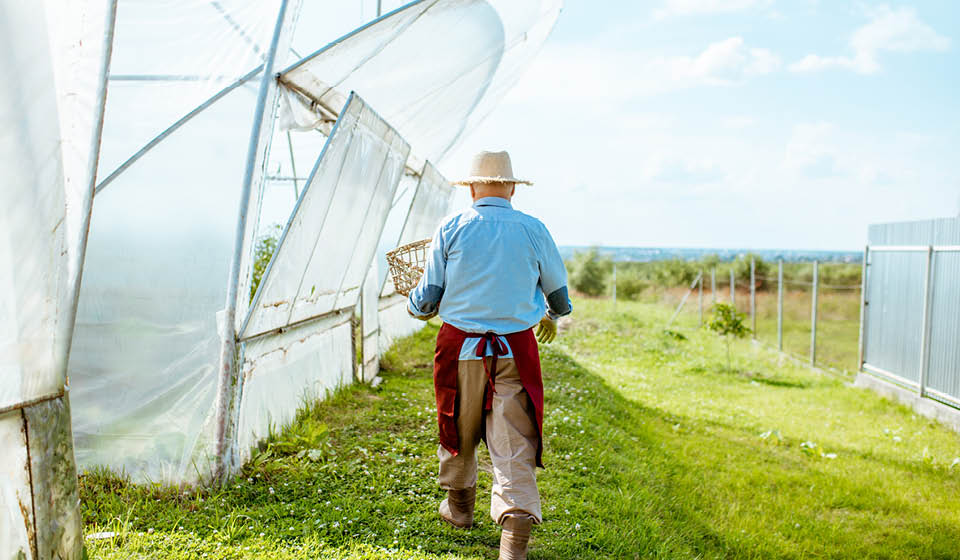
More and more people are living on earth, but the resources for food are stagnating. Modern agriculture is challenged; it must significantly and sustainably increase productivity and efficiency. Digitization and Big Data are supposed to help.
The world's population is continuously rising. While the world's population was around 7.8 billion in 2020, this figure is expected to rise to around 9.7 billion by 2050, according to a forecast by the United Nations (UN). For the year 2100, the UN expects 10.9 billion people. By way of comparison, 1.1 billion people lived on Earth in 1960. They all need to be fed, which is a major challenge for agriculture.
Around one in ten people in the world go hungry
More than 800 million people go hungry; that is about 10% of the world's population, according to the UN. Almost 3 billion people have no access to a healthy diet. At the same time, about one-third of the food produced spoils, and a large proportion is thrown away. In addition, food production is responsible for one-third of global greenhouse gas emissions. At the UN Food Summit in September this year, UN Secretary-General Antonio Guterres therefore called for the development of new food systems that would also be in harmony with nature. The UN estimates that food production must be increased by 70% until the middle of the 21st century. However, agriculture can only meet this challenge if productivity and efficiency are increased markedly and sustainably. "Digitization, the smart use of technology and the analysis of Big Data could be keys to success here," writes the Gottlieb Duttweiler Institute (GDI) in an introduction to the new "European Food Trends Report 2021". The complete study is available for purchase from the GDI.
Precision agriculture is the name of the new management strategy
For future agriculture, then, the aim is to produce more food from fewer resources, whilst protecting the environment. In fact, with the fourth Industrial Revolution, as well as the Internet of Things (IoT), agriculture has already taken a big step towards full automation, with machines, equipment and computers communicating and cooperating directly with each other. "Precision agriculture is a management strategy that collects and analyzes data to improve efficiency and sustainability. Thus, differences within and between fields are constantly monitored and analyzed to add to the soil and plants only the exact amounts of water, nutrients and fertilizer that are really needed locally," the authors state in the study.
Sensors measure more accurately than the farmer does
To determine what amount of water is appropriate over the next seven days, and when the best time to harvest is or what the best crop rotation is, modern agriculture uses networked sensors, drones and computer chips. "These end up having more information than the farmer," the authors say. This should optimize yields, conserve resources and reduce the ecological impact of chemicals.
Autonomous machines plow the field
Agriculture 4.0 is made possible by various new technologies, as the authors further explain: "Drones and satellites take high-quality images of the cultivated area, GPS and other geolocation systems can accurately record the positions of machines and sensors in the field, robots and high-precision agricultural machinery do most of the work, and the farmer steps in only in emergencies." In the future, more and more autonomous machines will be used to take over the work in the field. Furthermore, the authors add: "In the process, the devices used will communicate incessantly with each other, and smartphone applications will enable constant monitoring, analysis and evaluation of the data generated."
Greenhouse gases could be reduced
According to the authors, the generated data is sent to a central computer, which processes the information and sends the appropriate actions back to the devices. "This would allow robots to apply the exact amount of fertilizer needed, or IoT devices to apply the perfect amount of water directly into the soil. Even greenhouse gas emissions could be optimized," the authors say.
According to the authors, smart farming could make it possible to generate large yields without turning fields into species deserts and ruining the soil and water in the long term. Technological optimists have even gone so far as to suggest that we could do without soil altogether, they say.
Three scenarios describe the future of the food system
The authors of the European Food Trends Report 2021 have outlined three scenarios describing what the future of the food system could look like: "Stubborn Optimism," in that nothing changes at the core, but all stages of the value network become smarter, more efficient and more productive. With the right technology, all problems can be solved thereafter.
Another possibility would be a system of "Radical Regeneration," in which the deglobalization of the food system is at the center. The goal here is not food security, but food sovereignty. According to this system, only what makes sense under the given conditions and meets the needs of the regional population is cultivated and produced.
At the other end is the system of "hard regulations": the guidelines for the entire value network are set by a central control body. This can be a state, an organization, a private company or an artificial intelligence that controls the food system - and thus the health of the population. The question, however, is who determines what a possible future of the food system might look like.